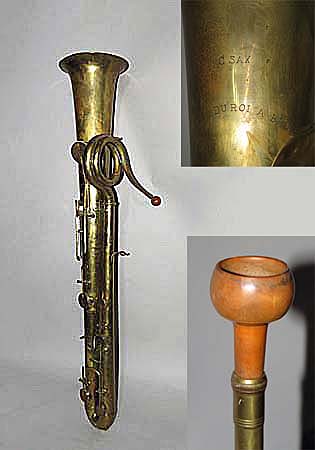
Owner: HWMC
Catalog#: CL-AELV-212
Cornetti / Serpents / Ophicleides
C. Sax 'Quinticlave in Eb'
Brussels, Belgium
Charles Joseph Sax
Metal, brass, leather
ca. 1835
Length: 44 inches
Wind Instruments – Brass Instruments – Cornetti / Serpents / Ophicleides
Engraved on the bell: C. SAX / FACTEUR DE ROI A BRUXELLES
The name “ophicleide” means “keyed serpent,” and was made as an improvement over the serpent. It is the bass member of the keyed bugles. It is believed to have been invented in 1817 and patented in 1821 by French instrument maker Jean Hilaire Aste (also known as Halary or Haleri). Made upright, the first ophicleide instruments had 9 keys, as seen here, while later models had 11 or 12 keys. The range of the ophicleide corresponds roughly to the bassoon. This ‘ophicleide’ is a quinticlave, also called an ‘alto ophicleide,’ in Eb with 9 keys. It is all original including the cup-shaped wooden mouthpiece.
Charles Joseph Sax, a Belgian music instrument builder, established himself in Brussels. In 1820, he was appointed official producer of woodwind and brass instruments for King William I of the Netherlands and his court. Later, Sax won many medals for his improvements and inventions, especially for his development of the clarinet and the ophicleide. Charles Sax was the father of the inventor of the saxophone, Antoine-Joseph (known as Adolphe) Sax, who was the first of his eleven children. In seeking to create a loud, low woodwind instrument, Adolphe Sax experimented with placing a bass clarinet mouthpiece on an ophicleide. This idea spawned the first saxophone.
